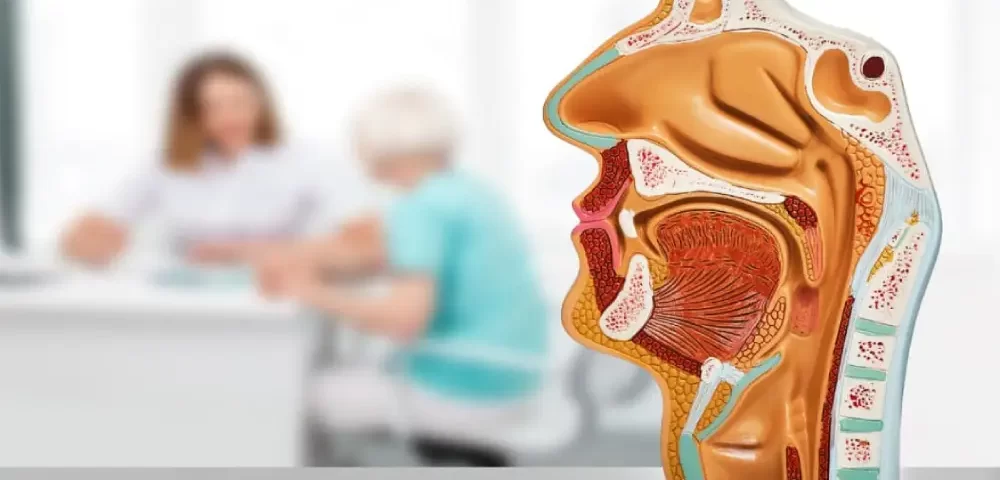shoring sleep apina

Sinus Surgery
December 25, 2018
Vertigo Treatment
December 25, 2018Nearly half of adults snore and over 25 percent are habitual snorers. Problem snoring and sleeping disorders are more frequent in males and people who are overweight and usually worsens with age.
Snoring is bothersome to others, but it can also be a sign of a more serious condition known as obstructive sleep apnea (OSA), which is present in three percent of the general population. OSA is characterized by multiple pauses in breathing greater than 10 seconds at a time due to upper airway narrowing or collapse. This lowers the amount of oxygen in the blood and causes the heart to work harder. Because the snorer does not get a good rest, they may be sleepy during the day, which decreases their performance. Untreated OSA can contribute to high blood pressure, stroke, heart disease, workplace or motor vehicle accidents, and more.
What Are the Symptoms of OSA?
Symptoms associated with OSA can include:
- Loud snoring
- Pauses in breathing during sleep
- Waking up gasping or choking
- Waking up with a dry mouth or a sore throat
- Daytime sleepiness or fatigue
- Frequent nighttime urination
- A morning headache
- Irritability, mood changes, depression, difficulty concentrating
- High blood pressure, heart disease, stroke, or other cardiac issues
What Causes Obstructive Sleep Apnea?
The noisy sounds of snoring occur when there is a partial obstruction to the flow of air through the passages at the back of the mouth and nose. This area is the collapsible part of the airway where the tongue and upper throat meet the soft palate and uvula. Snoring occurs when these structures strike each other and vibrate during breathing. Apnea occurs when the obstruction of air flow is more severe, leading to reduced, compromised, or completely blocked air flow while trying to breathe.
In children, snoring may be a sign of problems with the tonsils and adenoids. In adults, the site of obstruction may not be as simple to identify. Obstruction in an adult may be due to a combination of factors in different areas, making it more challenging to identify and treat.
What Other Factors Contribute to Snoring and Sleep Apnea?
Poor muscle tone in the tongue and throat—When muscles are too relaxed, the tongue falls backward into the airway, or the throat muscles draw in from the sides into the airway. Alcohol or drugs that cause sleepiness may worsen muscle relaxation and obstruction.
Excessive bulkiness of throat tissue—Children with large tonsils and adenoids often snore. Overweight people may have excess soft tissue in the neck that can lead to airway narrowing. Those with very large tongues are especially susceptible to snoring and OSA. Cysts or tumors are rare causes of airway narrowing.
Long soft palate and/or uvula—A long palate narrows the opening from the nose into the throat. The excessive length of the soft palate and/or uvula acts as a noisy flutter valve during relaxed breathing.
Obstructed nasal airways—A stuffy nose requires extra effort to pull air through it. This creates an exaggerated vacuum in the throat that pulls together the floppy tissues of the throat. Sometimes, snoring only occurs during allergy season or with a cold or sinus infection. Deformities of the nose or nasal septum, such as a deviated septum (a deformity of the wall that separates one nostril from the other) can also cause snoring and OSA.


